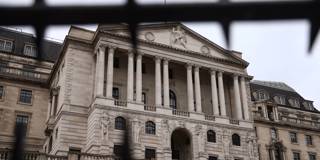After years of persistently low inflation, tepid growth, and rising inequality, central banks can no longer justify a monetary-policy regime that targets price stability. To strengthen the post-pandemic recovery, they must shift gears, by adopting a policy objective that actually has some bearing on the real economy.
LONDON – Ever since Western central banks started targeting inflation in the early 1990s, some economic analysts – not least Samuel Brittan of the Financial Times – have been pointing out that it would be better to target nominal GDP. As the numerical value of all output or expenditure in an economy, nominal GDP combines a country’s real economic output with its associated prices or costs.

LONDON – Ever since Western central banks started targeting inflation in the early 1990s, some economic analysts – not least Samuel Brittan of the Financial Times – have been pointing out that it would be better to target nominal GDP. As the numerical value of all output or expenditure in an economy, nominal GDP combines a country’s real economic output with its associated prices or costs.